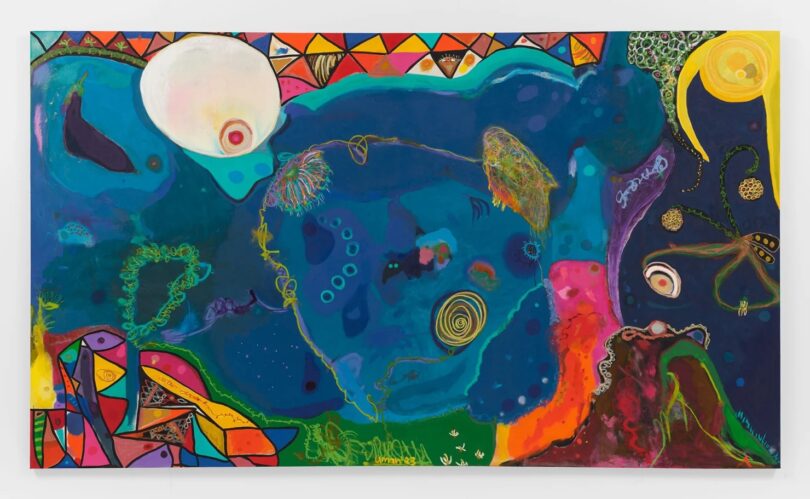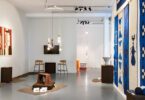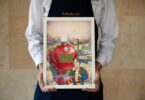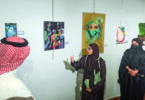(CNN) : Uman is not a fan of traveling. “I’m more of a fan of the destination,” the artist said, smiling behind sunglasses on a cloudy afternoon in London. “If I could just be beamed somewhere, I would be so happy.”
And yet, migration and movement have played a major role in her life, and within her work. Born in Somalia in 1980, Uman and her family left their home there when she was nine years-old as a result of the Somali Civil War, later relocating to Denmark when she was 13. In the 2000s, she moved to New York City, where she would sell her artwork on the streets in and around Union Square. Since 2010, she’s been based upstate, away from the hustle and chaos. “I felt like the city was not very conducive to my creativity,” she told CNN in an interview.

It’s her studio — “my fortress,” as she calls it — where she feels most at home, happiest and freest. This sense of freedom is conveyed in Uman’s latest work, currently on display at Hauser & Wirth London. Titled “Darling sweetie, sweetie darling,” the new exhibition is a kaleidoscopic world of color, drawing in influences across cultures, space and time.
Seven large-scale paintings adorn the walls of the gallery’s white cube layout, all exuberant explosions of color, calling back to Uman’s childhood. “I grew up in a very condensed place,” said Uman, whose first solo exhibition opened in 2015 in New York, featuring work across media including paintings and sculpture. “Most of my memories are of Kenya and (there), everything was just sensory. And I think that’s part of what comes out in my work.”
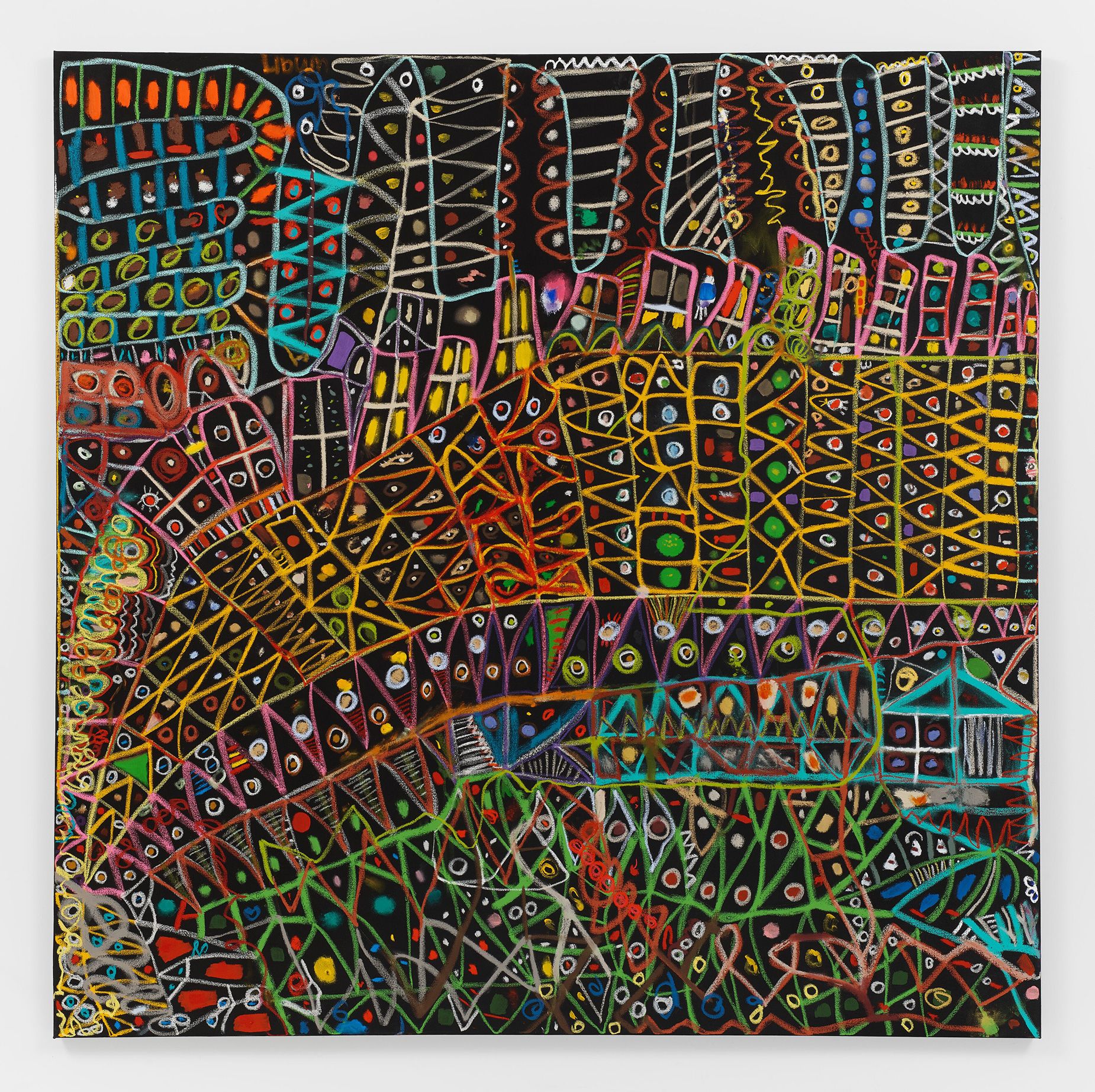
Though distinct, the works are connected in various ways. Motifs recur, such layered geometric shapes, or the circular spirals reminiscent of the Arabic calligraphy Uman studied as a child. The paintings share a similar deep blue color palette, punctuated by jewel-toned accents. For Uman, these hues represent the expansive skies of her home and studio.
An ‘emotional reaction to my environment’
She emphasizes her approach to painting is guided solely by her intuition and instinct, and is a constant process of reapplying, reassessing and being guided by her mood on any given day. “I never, ever plan it,” she said. “I can only say it’s just a feeling, an emotional reaction, to my environment, reactions to my dreams and how I see the world.” Uman, who is trans, has also described the paintings as a form of self-portraiture, and as an extension of who she is.
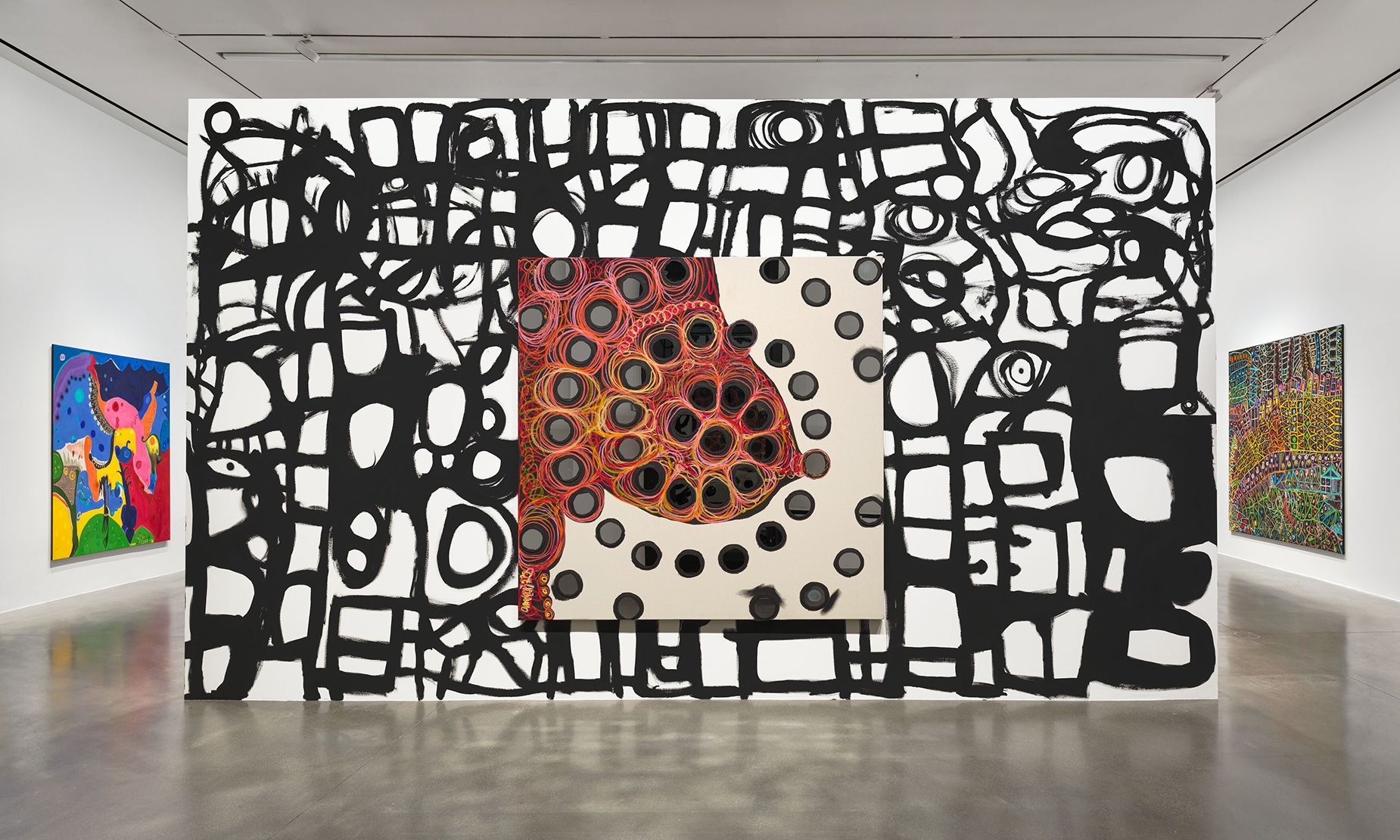
In a way, each work in the show also extends beyond its own canvas, as Uman worked on several artworks simultaneously during the second half of 2023. “They all have sisters or brothers… they all have a piece of each other.”
Uman’s process is specific, honed through her experiences in her earlier New York City years of making do with the materials she had. She often stretches her own canvases by hand, preferring to use cotton rather than linen, not only because of the way it carries the colors of the paint, but also because it’s more “economical”. (“I just think that I’m always going to have a struggling artist mentality,” she laughed, adding that she has some paint tubes among her collection that are 10 years old.) Often leaving the canvas unprimed, she uses a mixture of techniques to create different effects with the paint, including application with dry brushes or using her hands.
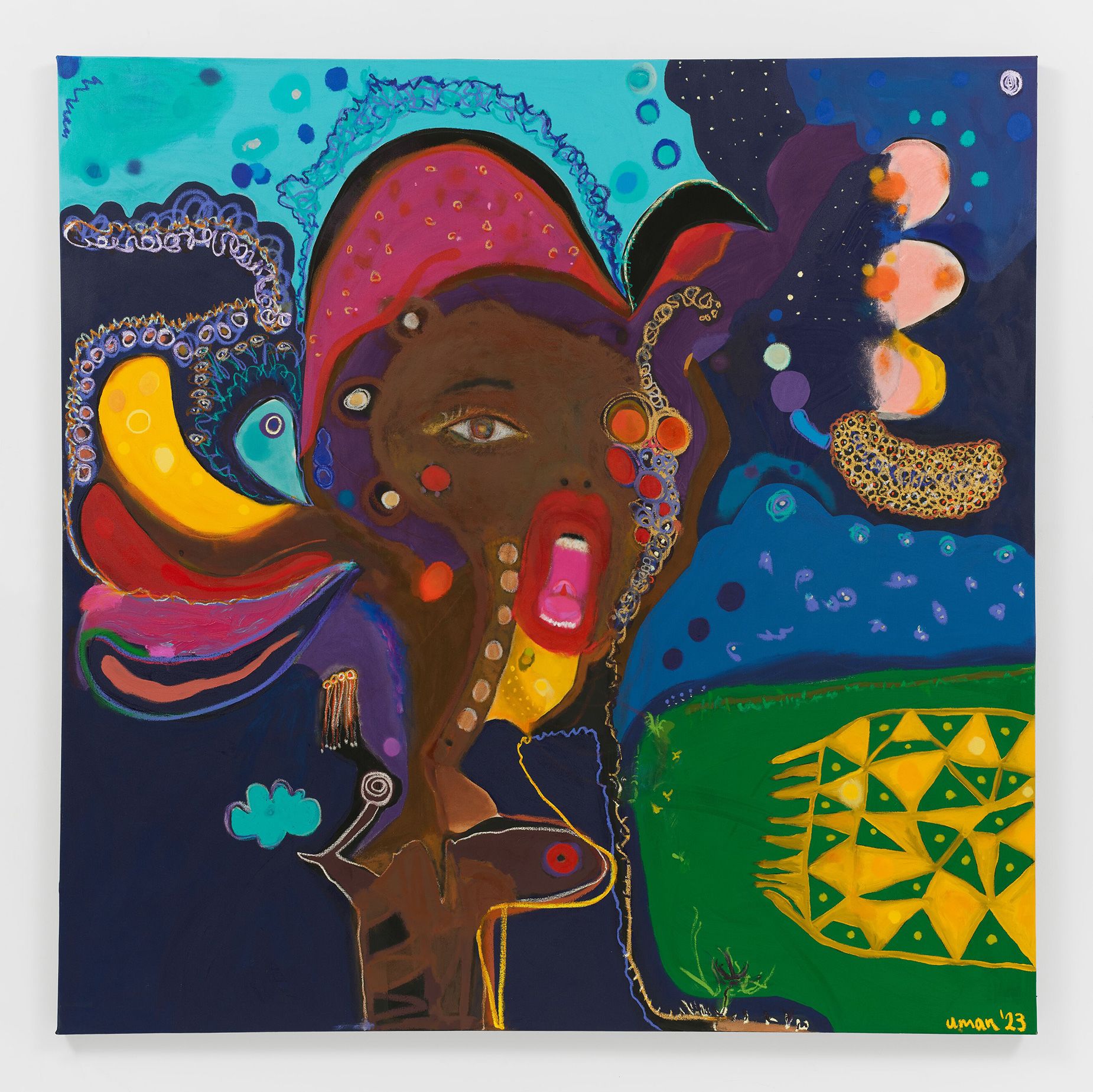
This technique is seen in the exhibition’s centerpiece: a site-specific mural painted boldly in black on a colossal white canvas, with clearly defined brush stroke details viewable from all angles. On both sides of the mural, smaller colorful works hang, adorned with circular mirrors. “The mirrors came from nostalgia,” says Uman, who recalls growing up celebrating Eid wearing garments embellished with circular mirrors. “I’ve always felt like mirrors play a big role. I have a love-hate relationship with them, but at the same time, I don’t know if I can live without mirrors.”
In December 2023, Uman’s work was shown at Art Basel Miami, and in October 2025, her first US museum solo exhibition will open at The Aldrich Contemporary Art Museum in Connecticut. It’s an exciting point in her career; one that prompts self-reflection, much in the spirit of the show. As Uman shares her thoughts on potentially revisiting Nairobi one day, where she’s not returned since the 1990s, it feels like she’s perhaps talking about more than location alone.
“I don’t think my goal would be to go back to my past. I kind of like that idea of never looking back. Just keep moving forward.”

